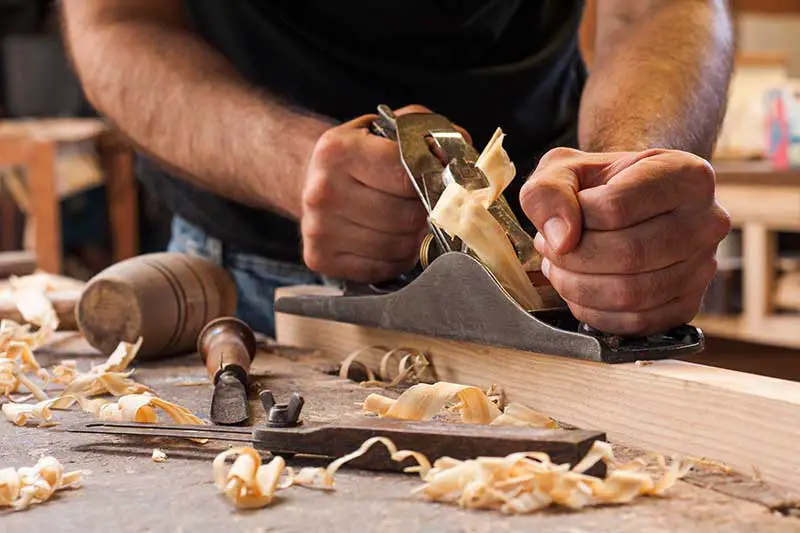Snipe is an uneven removal of material by a planer, typically at the beginning or end of a board. Preventing snipe involves proper alignment of infeed and outfeed tables, adjusting roller pressure, supporting the workpiece, and maintaining consistent feeding. Fix snipe by sanding, planing, or jointing the affected area.

What is Snipe and How It Occurs in Planers
Snipe is the uneven removal of material by a planer, usually at the beginning or end of a board, causing an uneven surface. Snipe occurs when the planer’s cutter head engages or disengages the workpiece unevenly. This can be due to several factors, including misaligned infeed and outfeed tables, incorrect roller pressure, or inconsistent workpiece support.
Causes of Snipe
- Misaligned infeed and outfeed tables: If the tables are not perfectly parallel, it can cause the workpiece to tip up or down, resulting in snipe.
- Incorrect roller pressure: If the pressure on the rollers is too high or too low, it can lead to uneven contact with the workpiece, causing snipe.
- Inconsistent workpiece support: Unsupported workpieces can sag or twist, leading to an uneven cut and snipe.
“Snipe can be a frustrating issue when using a planer, but with proper setup, adjustments, and technique, you can minimize or even eliminate snipe for a smooth and professional finish.”
How to Prevent Snipe in a Planer
Aligning Infeed and Outfeed Tables
One of the most important steps in preventing snipe is to ensure that your infeed and outfeed tables are properly aligned. They should be parallel to each other and to the planer bed. If they are not aligned correctly, adjust the tables according to the manufacturer’s instructions.
Adjusting Planer Rollers
Another essential step in preventing snipe is adjusting the pressure on the planer rollers. Consult your planer’s manual for specific guidelines on roller pressure adjustments. Generally, you want to ensure that the rollers are applying enough pressure to keep the workpiece in contact with the planer bed, but not so much that they cause uneven pressure or distortion.
Supporting the Workpiece
Ensure that the workpiece is adequately supported throughout the entire planing process. Use infeed and outfeed supports or roller stands to keep the workpiece level and prevent sagging or twisting.
Feeding the Workpiece Consistently
Feed the workpiece into the planer at a consistent speed and pressure. Avoid sudden changes in speed or pressure, as these can cause snipe.
Adjusting Planer Settings to Reduce Snipe
Depth of Cut
Adjust the depth of cut to remove less material per pass, which can help reduce the likelihood of snipe. Taking shallower passes can give the planer more control over the workpiece, leading to a smoother finish.
Pressure Bars
Ensure that the pressure bars are properly adjusted according to your planer’s manual. The pressure bars should be set at the correct height and pressure to support the workpiece as it passes through the planer.
Cutter Head Alignment
Check the alignment of the cutter head in relation to the planer bed. If the cutter head is not properly aligned, it can cause uneven cuts and snipe.
Fixing Snipe After It Occurs in a Planer
Sanding
Use a sanding block or an orbital sander to smooth out the affected area. Start with a coarse grit sandpaper and work your way to a finer grit for a smooth finish.
Planing
If the snipe is not too deep, you can remove it by running the workpiece through the planer again, adjusting the depth of cut to remove only the snipe-affected area.
Jointing
If the snipe is significant, use a jointer to remove the affected area and create a flat, even surface.
| Method | Purpose | Process |
|---|---|---|
| Aligning Infeed/Outfeed Tables | Prevent snipe | Ensure tables are parallel to each other and the planer bed, adjust if necessary. |
| Adjusting Planer Rollers | Prevent snipe | Set the correct roller pressure according to the planer’s manual. |
| Supporting the Workpiece | Prevent snipe | Use infeed and outfeed supports or roller stands to keep the workpiece level. |
| Adjusting Planer Settings | Reduce snipe | Modify depth of cut, pressure bars, and cutter head alignment to minimize snipe. |
| Sanding | Fix snipe | Smooth out the affected area using a sanding block or orbital sander with different grits. |
| Planing | Fix snipe | Re-run the workpiece through the planer, adjusting the depth of cut to remove snipe-affected area. |
| Jointing | Fix significant snipe | Use a jointer to remove the affected area and create a flat, even surface. |
“By understanding the causes of snipe and employing preventive measures, you can greatly reduce the occurrence of snipe and improve the quality of your woodworking projects.”
Key Takeaways
- Snipe is the uneven removal of material by a planer, usually at the beginning or end of a board.
- Preventing snipe involves proper alignment of infeed and outfeed tables, adjusting roller pressure, supporting the workpiece, and maintaining consistent feeding.
- You can fix snipe by sanding, planing, or jointing the affected area.
